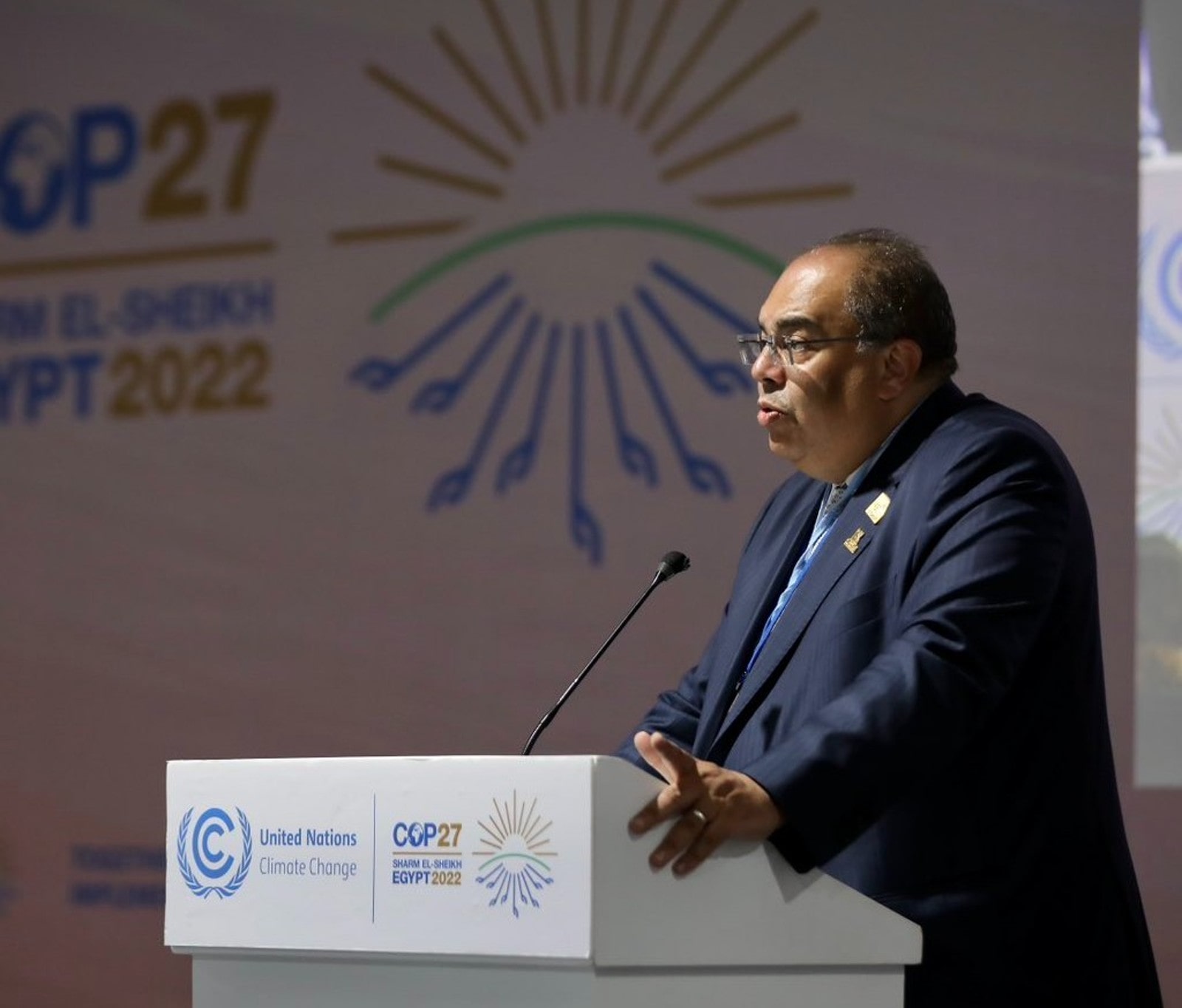A post-COP27 analysis with Egypt’s climate czar Mahmoud Mohieldin

Where we stand with climate finance after COP27: The dust has settled after an eventful COP27 that ended with the agreement to create a landmark loss and damage fund. In the run-up to the summit, Egypt’s UN high-level climate champion Mahmoud Mohieldin (LinkedIn) led calls for developed economies to step up funding for adaptation and economic development in climate-vulnerable countries — as part of overall climate finance provision. (Catch up on our September interviews with Mohieldin here and here.)
So what needs to be done before COP28? We sat down with Mohieldin for a post-COP27 debrief on the summit’s achievements, how to build on recent progress on climate finance, and priority action in the run-up to COP28.
Edited excerpts of our conversation below:
For Mohieldin, COP27 marked an important step towards climate justice: “Developing economies — and developed economies that care about fairness and the just transition — will be very pleased with COP27’s outcomes,” he notes, “although we know agendas and priorities differ.”
Arguably the biggest W? There’s now explicit recognition that loss and damage is a separate issue from adaptation — requiring different evidence, funding, support and technical work, says Mohieldin. The long-term conflation of the two by some advanced economies “wasn’t helpful and delayed matters for many years.”
What happens next: A 24-member committee — with representatives from the current and incoming COP presidencies, developing and advanced economies — will identify the scope of work, funding sources, and priorities for loss and damage action, with a schedule due before the end of the year. “We’re expecting a lot of practical solutions,” Mohieldin says.
These financing solutions need to be separate from the USD 100 bn a year funding commitment previously made by developing nations, Mohieldin says. There’s a USD 1 tn financing gap just to address mitigation, with additional funding needed for adaptation, he adds. “In terms of overall climate finance requirements, USD 100 bn is less than 3% of what’s needed.”
Mobilizing concessional financing for adaptation: Adaptation funding should ideally come from grants, foreign direct investment, or concessional long-term financing — with a minimum grace period of 10 years, a 20-year payback period and an interest rate capped at 1%.
“How could we subsidize this interest rate? From the promised USD 100 bn — which could be used to reduce the cost of borrowing,” he says. “Adaptation requires long-term finance, and I don’t really see the private sector doing more in the short-term, because its current global contribution doesn’t exceed 2%.”
Mitigation should be the purview of the private sector, with de-risking, packaging and political assurances, he says. “In a typical project, you might target 10-20% of funding from DFIs — as project participation, long-term finance, guarantees or taking the first loss. Then you’d hope for 80% of funding from the private sector.”
His take on the Great Debate? Before pointing the finger at developing nations wanting to use fossil fuels for development, advanced economies need to reduce their own emissions significantly, pay their fair share in climate finance, and help with the just energy transition — “not just with drops of USD bns every now and then, as we’re seeing with South Africa and Indonesia.”
What’s next for him? He’ll be working to bring other stakeholders into loss and damage action: “I’ll be meeting in the US with leading names in the ins. industry to build on discussions in Sharm, and will meet with the Ins. Development Forum (IDF),” Mohieldin says. Non-state actors can also do a lot of capacity building for developing economies, he adds.
Egypt’s Africa carbon credit market is a priority: Mohieldin is working closely with Financial Regulatory Authority Executive Chairman Mohamed Farid (LinkedIn) on areas including carbon credit markets, he tells us. The two recently discussed the market’s technical and regulatory requirements, issues related to market integrity, and adopting currently available standards and technical assistance, he notes.
A Glasgow Financial Alliance for Net Zero (GFANZ) project pipeline is also coming together: “We have a list of 50 projects which basically translates the promise of GFANZ into project pipelines,” he says. Projects span mitigation and adaptation initiatives, from countries within and beyond Africa.
Several key COP27 learnings can be carried into COP28: Public-private partnerships for COP arrangements need to go beyond transactions and translate into institutional coordination, Mohieldin says. COP28 will benefit from a strong project pipeline, he adds. COP27 and the G20 summit showed that “multilateralism can still be a vehicle for reform and getting things done, with tangible and substantive outcomes,” he says.
CORRECTED ON 1 DECEMBER
A previous version of the story had put a USD 100 bn figure on the loss and damage fund. No USD amount has yet been placed on the loss and damage fund announced at COP27.